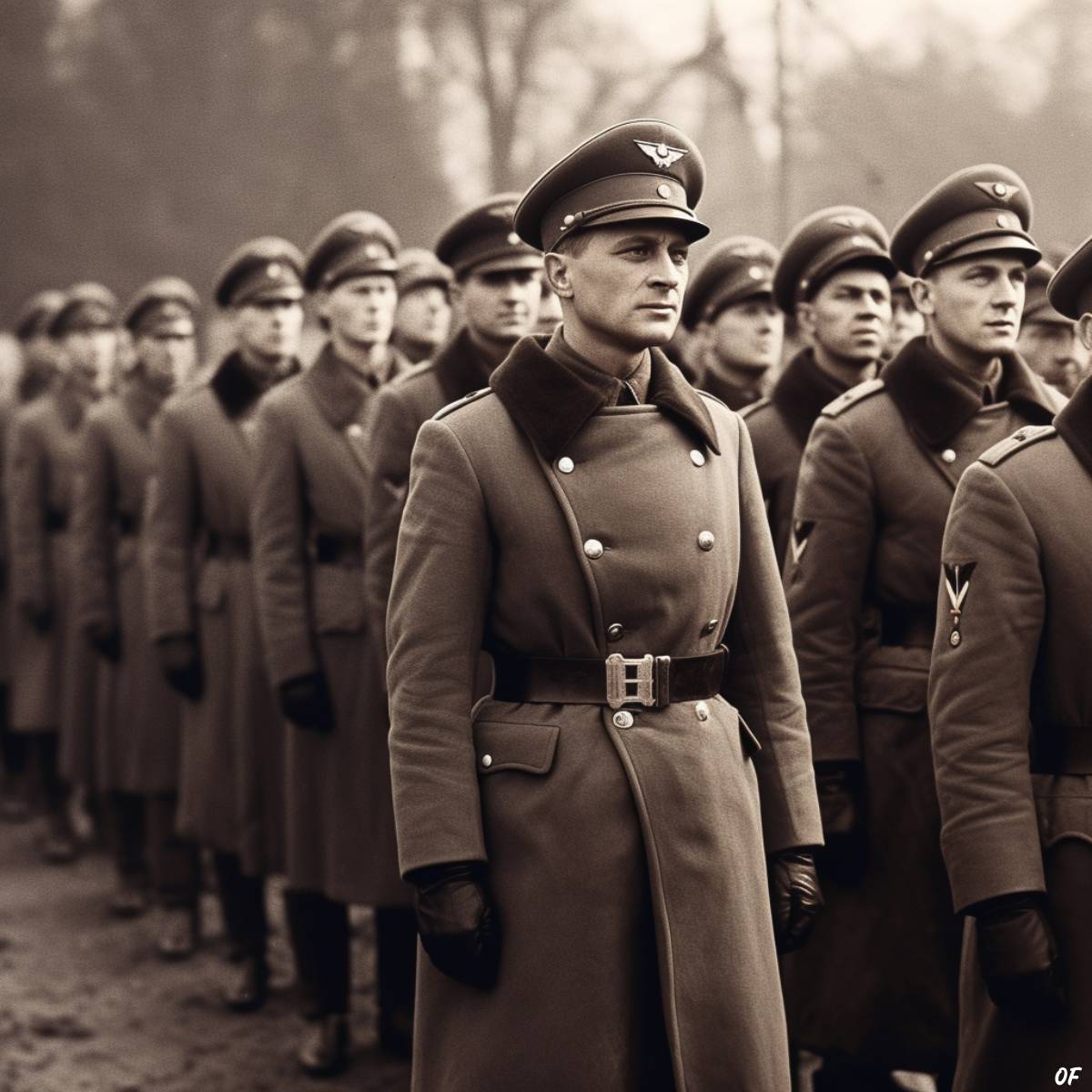During World War II, the German army was powered by crystal meth. Adolf Hitler was addicted to it, and so were millions of German civilians.
For hundreds of years, soldiers have used drugs to boost their performance in battle. Viking berserkers took hallucinogens which enabled them to fight with great rage and ferocity while in a fearless, trance-like state. During the American Civil War, soldiers were prescribed opium to relieve pain and strain. When thousands of these soldiers became addicted to the drug, it led to an opiate crisis that blighted America for decades.
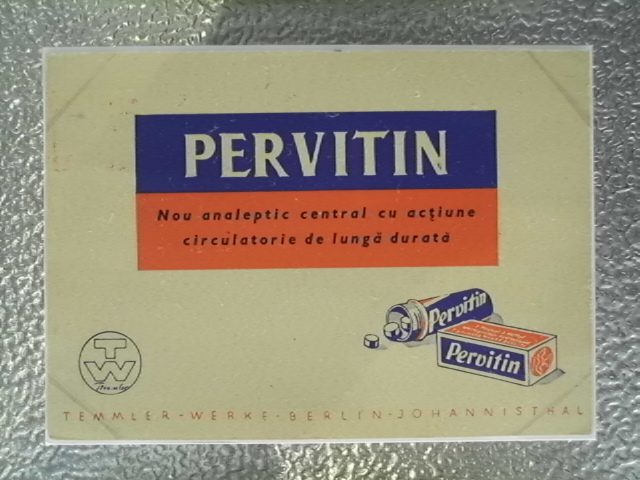
During World War I, British soldiers were often given something called ‘Forced March.’ This drug was a mix of caffeine and cocaine and helped soldiers to shake off fatigue. Two years into the war, on the back of public concern about the morality of drug taking, the British Army began restricting the use of Forced March, but they didn’t ban it completely.
World War II was no different, with armies on both sides keeping their soldiers pumped with performance-enhancing drugs. Nazi Germany was the main culprit in this regard, as Adolf Hitler supplied his men with Pervitin—a potent drug more commonly known as methamphetamine, or crystal meth.
Who invented Pervitin?
Crystal methamphetamine is not a naturally occurring substance. It needs to be synthesized in a lab. The first person to do this was Nagai Nagayoshi, a Japanese chemist who produced a batch in 1893.
Methamphetamine is a relatively new drug. Opium, for example, was discovered thousands of years ago. Cannabis is even older, with the plants first domesticated 12,000 years ago. Humans were getting high on weed before they had even invented writing.
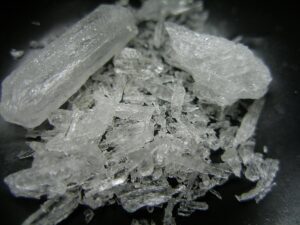
In 1936, a German chemist named Fritz Hauschild began to explore the production of crystal meth on an industrial scale. The German nation had plenty of experience in drug manufacturing. According to German historian Norman Ohler, Germany produced 40% of the world’s opium supply between 1925 and 1930, while they were also major producers of cocaine.
It didn’t take long for Hauschild to perfect a technique for manufacturing methamphetamine, and his company launched it under the brand name Pervitin at the end of 1937. Pervitin was described as an energy pill that would boost alertness and self-confidence.
The drug became wildly popular, largely thanks to a marketing strategy inspired by Coca-Cola. A prolific poster campaign spread awareness of the drug, while free samples of Pervitin were sent to potential customers. The drug could be bought without a prescription and not just in the form of pills. German citizens could also buy boxes of chocolates spiked with Pervitin.
Today, we know that methamphetamines have dangerous side effects: hallucinations, paranoia, heart problems, and delirium. But in 1930s Germany, these adverse effects weren’t widely known. All across the country, people were getting high on meth. At the height of production, more than 800,000 tablets were synthesized daily.
Did the Nazi regime approve?
In general, the Nazis were opposed to all drugs. Opium, for example, was known to dull the senses, which naturally clashed with their vision of an Aryan race with razor-sharp reflexes. One of the first laws they passed after coming to power made addiction to opium a criminal offense. The secret police worked to track down users, while doctors were obliged to report any patients who took narcotics for longer than two weeks.
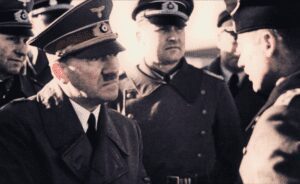
The Nazis also disapproved of alcohol, another substance that dulled the mind. The Nazis didn’t prohibit alcohol, because they knew it would lead to public outrage, but they ran anti-alcohol campaigns to encourage sobriety. A typical poster read, “Our Führer Adolf Hitler drinks no alcohol…his performance at work is incredible.”
The Nazis didn’t like cigarettes either. They banned smoking in public places, restricted cigarette advertisements, and emphasized the link between smoking and lung cancer. A poster released in 1941 read, “You don’t smoke it—it smokes you!”
Pervitin, however, was a very different matter. Where other substances clouded the senses, Pervitin pills had the opposite effect. They electrified the central nervous system, making the user’s brain faster, sharper, and hyper-alert. The Nazis, therefore, encouraged the use of Pervitin because sharp-minded citizens aligned with their plans for a German super race.
Military applications
Doctor Otto Ranke was a German military researcher; like many other Germans, he was a heavy Pervitin user. In his wartime journals, he said, “With Pervitin, you can go on working for 36 to 50 hours without feeling any noticeable fatigue.”
In 1939, he began to explore the military applications of the drug. If Pervitin could be used to boost the performance of German civilians, it could surely be used on German soldiers too. After testing the drug on university students, Ranke concluded that Pervitin pills would give the Germans an edge in warfare. He called it “an excellent substance for rousing a weary squad” and described it as “militarily valuable.” Powered by the drug, a soldier would be able to run faster, jump higher, and go for days on end without food or sleep.
Based upon Ranke’s recommendations, Pervitin became an important part of Nazi military strategy. Millions of pills were supplied to the army, just in time to launch an assault on Poland—the event that marked the start of World War II.
Blitzkrieg: lightning war
In September 1939, the Pervitin-powered German army invaded Poland. They moved with startling speed, and without needing rest or sleep, they caught the Polish army completely off guard. This military strategy became known as a blitzkrieg or ‘lighting war,’ and proved hugely successful in the early years of the conflict.
Poland fell to the German armed forces in a matter of weeks. The Nazis launched similar attacks in Denmark and Norway without pausing for breath. Both of these countries were taken completely unawares by the rapid German advance.
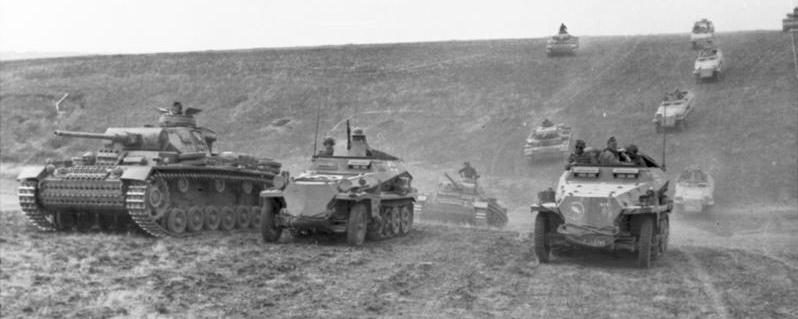
The Germans took control of the Netherlands, Belgium, and France shortly after that. All the while, they covered ground at an astonishing rate. For example, the German tanks moved from Belgium to France—a distance of 240 miles (386 km)—in just 11 days.
The Nazis also launched drug-fueled attacks from the skies. While their tank troops advanced at lightning speed, planes dropped paratroopers behind enemy lines. These soldiers wreaked havoc wherever they landed. The British press described the German paratroopers as “heavily drugged, fearless, and berserk.”
The side effects
In the first few months of World War II, Nazi Germany seemed almost invincible, with their soldiers devastating Europe like a lightning storm. But this started to change during the invasion of France when some of the soldiers began displaying side effects.
It started with heart problems. A number of Nazi troops, including a lieutenant colonel and a tank commander, had to be rushed to the hospital. Others struggled with blackouts, delirium, and paranoia. Still more suffered crippling withdrawal symptoms. In the days which followed a blitzkrieg attack, they lay shivering in bed, pleading desperately for pills.
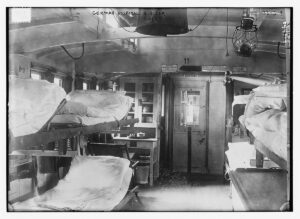
Similar side effects were becoming evident amongst the general German population. Scrambling to avoid a public health crisis, the Nazis restricted the supply of Pervitin so that civilians could only obtain it with an official prescription. The military also cut back on the drug but didn’t stop using it completely. In 1941, when the new restrictions came into effect, 10 million pills were still shipped to German soldiers, a rate which continued until the end of the war.
The Nazis also tested a new military drug called D-IX, which combined meth with morphine and cocaine, but the war ended before the drug could enter mass production.
Did other countries use wartime drugs?
Germany was the main user of military drugs during World War II, but they certainly weren’t the only ones.
When the British army discovered Pervitin pills in the wreckage of a German plane, they analyzed it and then began producing their own version known as Benzedrine, an amphetamine that boosted aggression and confidence. The Americans used Benzedrine too. When they landed in North Africa in 1942, their men brought 500,000 Benzedrine tablets with them.
The Japanese army also had its own version of the drug called Philopon. This methamphetamine was similar to the pills which fueled Nazi Germany and were marketed as a pick-me-up to help soldiers stay alert. Japanese kamikaze pilots took Philopon as well as shots of sake before going on their suicide missions. The potent alcohol helped them to relax while waiting for the mission to begin.
Finally, the Soviet Union provided its troops with a daily vodka ration of 100 milliliters. The alcohol was supposed to alleviate stress and boost confidence, while also making some of the colder conditions more bearable. This ration was cut in the second half of the war, but the Russian soldiers were flush with liquid courage for the first few years.
Hitler’s personal addiction
Soldiers weren’t the only ones taking drugs during World War II. Adolf Hitler was a Pervitin user, after his personal physician, Theodor Morell, recommended the drug as a remedy for a severe stomach problem. Morell also prescribed caffeine pills, bull semen, morphine, and cocaine. Hitler operated on a cocktail of assorted drugs for most of the war.
None of this was good for Hitler’s health. There were reports that he developed Parkinson’s Disease, a progressive nervous system disorder. He became increasingly divorced from reality, making it harder for him to strategize properly. This may have contributed to the collapse of German operations in the latter stages of the war.
Other leaders used drugs too. Winston Churchill was a borderline alcoholic and took amphetamines to keep himself alert.
Do modern armies use Pervitin?
Nowadays, most modern armies prohibit the use of performance-enhancing drugs. That doesn’t mean their soldiers are completely sober. Research has found that a significant number of modern soldiers drink too much alcohol, take prescription opioids, use energy pills to stay awake, or sleeping pills to relieve anxiety.

But Pervitin is no longer part of the conversation. Methamphetamines are illegal in most countries, and only available through the black market. In Germany, the drug remained popular for a few decades after the end of the war, where it could still be prescribed as an appetite suppressant, but this changed in the 1990s. Today, the substance is prohibited in Germany, and that doesn’t seem likely to change.

